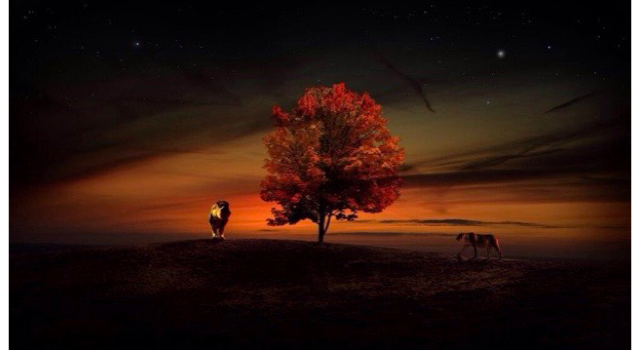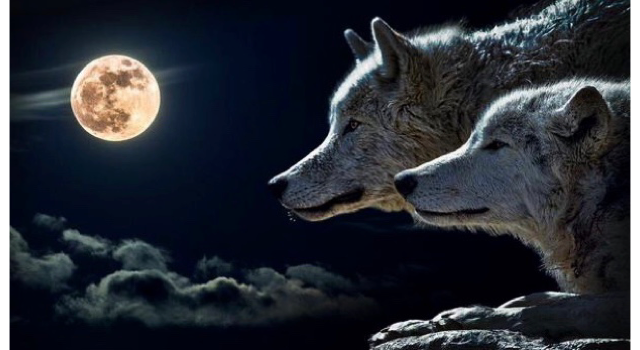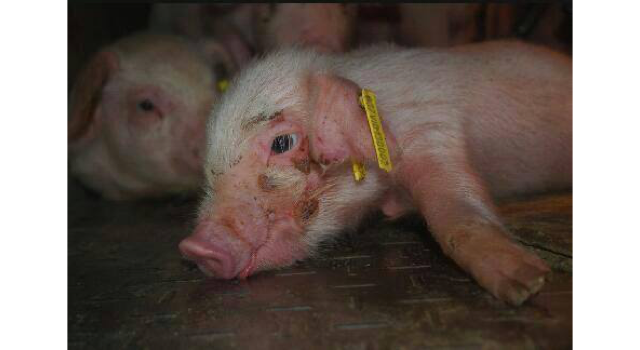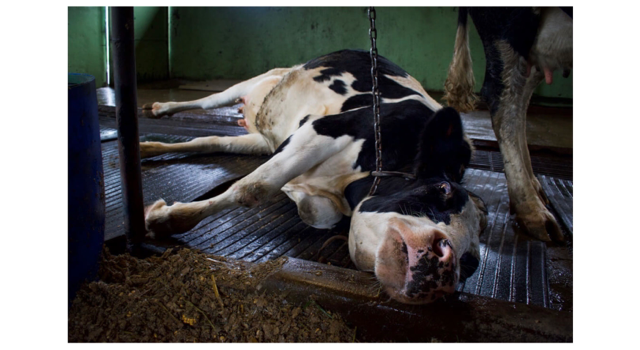France’s hunger for frogs’ legs is “destructive to nature” and endangering amphibians in Asia and…

Live Baby Foxes Fed To Dogs At South Herefordshire Hunt HQ ..
A harrowing video that appears to show fox cubs just weeks old being fed live to hunting hounds at a kennels is being probed.
The footage, obtained using hidden cameras, shows four cubs in cages and a man carrying two of them into a shed where the dogs are kept.
The hounds can then be heard howling and barking before the savaged bodies of the cubs are apparently dumped in a wheelie bin.
The Hunt Investigation Team, which shot the film at South Herefordshire Hunt HQ, claims it is grisly proof that hounds are still being taught to kill foxes through a practise known as ‘cubbing’.
A spokeswoman for the Hunt Investigation Team said, “They don’t naturally hunt foxes.
They have to be taught to recognise foxes as prey and not only to hunt them but to also kill them.
We believe this evidence shows fox cubs were actually thrown to the hounds, because the bodies came out.
When our investigators took those fox cubs out, one of them was disembowelled, one of them had multiple bite wounds.
Our feeling is that they were fed live to the hounds.
They are babies who shouldn’t even have been away from their mum.”
( Louie Smith, 24.06.2016 )
We live in a world where half the people are not yet fully evolved or civilised.
And the animals are the victims of their mindless cruelty and ignorance.
The UK Are Complicit In The Killing Of Elephants ..
Every day across Africa more than 80 elephants are killed for their ivory.
If the killing continues at this rate, they will be extinct in the wild within 25 years.
Anyone like me with a passion for conservation might have heard about thousands of elephants being killed for their ivory.
Many might also know that the main market for the carved ivory products driving this brutal trade is Asia.
Particularly China, Hong Kong and Vietnam.
We are involved.
In fact, I’ve been forced to conclude that we are complicit in the killing.
For it turns out that we have a thriving ivory trade of our own here in the UK.
Every week hundreds of carved ivory pieces are bought and sold in antiques markets and auction houses and, increasingly, online.
And official figures we uncovered revealed that last year more than 2,500 pieces were exported from the UK to Hong Kong alone.
Many carved ivory pieces are still legal.
They can be bought and sold in the UK and even exported abroad just as long as they are ‘antiques’, which is defined for some obscure reason as pre-1947.
But once I began to follow the ivory trail for my programmes, this is not an argument I could accept at face value.
My investigation has been, at times, a gut-wrenching experience.
I started by scraping dead flesh from sawn up sections of illegally imported elephant tusks recently seized at Heathrow Airport.
The DNA from these and many other tusks seized around the world give us a picture of the poaching hotspots of Africa.
And there’s none worse than the vast Niassa Reserve.
From the poaching hotspot of Northern Mozambique, I’ve then followed the ivory trail through the leaky port of Mombasa in Kenya and out to the busiest ivory markets in the world – Hong Kong, China and Vietnam.
The UK ‘antique’ ivory is often not antique at all.
I know this because, as part of my investigation, I bought nine pieces of carved ivory from online auction sites and in markets across the UK.
They were pieces my expert advisor, TV auctioneer James Lewis, had identified as ‘suspect’.
I then had them radio-carbon dated in a lab in Oxford.
The results were shocking.
Of the nine pieces, six were not ‘antiques’ at all.
The tests proved that they were carved from modern ivory, from elephants that could have been killed by poachers in the last few years.
This suggests to me that our Government has simply not got a grip on the ivory situation here.
Regular seizures of ivory pieces at Heathrow indicate there is plenty also being illegally smuggled out to the rest of Asia too.
( Hugh Fearnley-Whittingstall, 22.10.2016 )
You dumb humans, I gave you free will and intelligence, and yet you are killing each other, killing the animals, and destroying the planet with your greed, ignorance and corruption.
You need to sort your sorry selves out before it’s too late.
The Murder Of Our Wildlife So Morons Can Shoot Grouse ..
The chilly air chaps your cheeks as your boots rustle through the heather – and when you reach the top of the hill, you can see for miles.
Stretched out all around you is moorland.
Open, treeless, with not a house or farm in sight.
It looks and feels wild, so you should expect to be able to see plenty of wildlife.
But there is nothing, it’s silent and still, it’s eerie.
Then you pass a log lying over a little stream.
On it, inside a metal cage, is a trap and in its jaws are the smashed and tangled remains of a stoat, its eyes squeezed from their sockets, its mouth locked open in a grimace of terminal pain.
Before that, you had stood holding your nose at the side of a gamekeeper’s ‘stink pit’, gazing in disbelief at the rotting bodies of foxes, crows, magpies, all mouldering in a vile mess of feathers, fur and flesh and bone.
And then through your binoculars, you spot something.
It’s a bird, flapping furiously, battering itself against a post.
It is hanging with its feet clamped in a trap.
When you get closer, you can see its bent and bloody legs, its long black-tipped grey wings and its frayed tail.
It is a male hen harrier and it has been caught in a pole trap.
It will die a long, painful death.
All this so the birds of prey and natural predators won’t harm grouse – birds that have been bred and reared to be shot for pleasure.
This is not a history lesson, a description of a day out in the Victorian age.
This is an account of a driven grouse moor in the UK now.
This seems almost unbelievable.
But then so is the fact that we, the taxpayer, contribute £56 per hectare in subsidies each year to help this foul ‘sport’ continue.
Foxes, stoats, weasels and crows are legally shot or killed in traps or snares.
Birds of prey are illegally shot, poisoned, trapped or trampled in their nests.
Try asking the Moorland Association or the Game and Wildlife Conservation Trust what happened to all the satellite-tagged hen harriers that have mysteriously disappeared on grouse moors in the past few years or those eight tagged eagles in the Scottish Highlands.
If you do raise these questions you may find yourself labelled as ‘controversial’.
( Chris Packham, 12.08.2016 )
The Conservative Government Bottled Their Manifesto Pledge On Ivory Ban ..
We shouldn’t be surprised that there is so much ivory here in the UK.
Between 1860 and 1920, the UK imported the tusks of over 1.1 million African elephants, mainly to make hairbrushes.
That is well over twice as many elephants as are alive in the whole of Africa today.
These ‘harmless antiques’ from our colonial past could now be sitting alongside carved ivory pieces made from some of the 30,000 African elephants that were shot by poachers in the last year.
This is helping to give the criminally traded ‘blood ivory’ a veneer of legitimacy.
And it means we are implicated in the horrific crimes of African poaching.
Ever since I uncovered this UK connection in the ivory trade, I have been pushing the UK ministers responsible for an interview for my films.
Since the Conservatives have pledged in two successive manifestos to ‘push for a total ban in the ivory trade’, I thought they might be forthcoming, taking the opportunity to outline their plans for this promised ban.
They chose not to talk to me.
But in the run up to the recent CITES conference in Africa – where the ivory trade was top of the agenda – the issue became hard to ignore.
With a resolution to recommend banning all the world’s domestic ivory trades on the agenda, just a few days before the conference began, our Secretary of State for the Environment finally made an announcement.
At last. A ban is on the way. Great news.
Or so I thought until I read the press release.
The coming ban will be on ‘modern day’ ivory only.
But this is already illegal.
So, it’s business as usual for those seeking to profit from our historic stocks of carved ivory by selling to Asia.
Our Government has missed the point.
In so doing, they have effectively bottled their manifesto pledge for a ‘total’ ban on the UK ivory trade.
( Hugh Fearnley-Whittingstall, 22.10.2016 )
Hares Have Declined By 80% In The Last 100 Years ..
The Brown hare is widely distributed anywhere there is open land for it to run on, grasses to eat and places to hide – it doesn’t burrow like the rabbit, but can run like the wind at 40mph.
For much of the year they hide in a grassy hollow called a form.
At night they feed on grasses plus some farm crops in summer, and in winter they will forage on anything they can find, including twigs and bark.
It’s all broken down by a fermentation process in the gut.
The month of March of course has its own myths and legends about mad March hares.
At this time of the year the Brown hares spurn their usual nocturnal ways and career about the fields in broad daylight, chasing one another, and setting up ear-scarring boxing matches far longer than a David Haye comeback fight.
Such hares were seen as crazed.
Crazy for love perhaps – it was long thought that the contests were between rival males.
In fact the combat is the result of females batting off the unwanted attentions of over-sexed males.
They are only receptive for a few hours in each cycle and when they’re ready the females set off on a catch me if you can race to sort out the best hare from the male pursuers.
Far from being confined to alliterative March madness the breeding season runs from January to August.
The end result is of course a litter of up to four leverets.
Dog walkers occasionally come across these young hares, cosseted and hidden in a grassy hollow.
They haven’t been deserted and shouldn’t be disturbed – the mother is merely away foraging and will often visit for only five minutes a day.
The young hares are weaned after four weeks and ready to run almost from birth.
A mother may produce three or four litters in a year.
Brown hares are not actually native to Britain but are thought to have found their way here from Europe during the Iron Age or with the Romans.
They joined Mountain hares (a very different looking beast) our only native hare species.
They have thrived since then but are now thought to be in decline.
Hunting does take place, mainly by shooting throughout the year (coursing was banned in 2004, but illegal coursing is still common).
Changes in farming techniques including autumn planting regimes and the loss of hedgerows haven’t helped.
For some reason when faced by massive machinery (or any other threat) hares will squat down and hide before using that burst of speed and farm equipment takes its toll.
Hares are said to have declined by 80% in the last 100 years.
There is still hope – the average lifespan is three to four years but individuals have reached 12 apparently, and they have a very good history of re-establishing themselves.
( Steve Windsor, March 2016 )



This Post Has 0 Comments